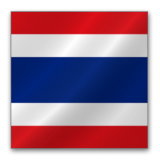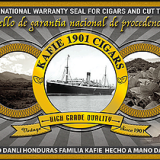What Are The Different Cigar Sizes?

Cigars exist in different shapes and sizes. But since today’s focus is on the cigar sizes, let’s explore how any smoker, whether a cigar aficionado or a beginner, can identify the size of a cigar.
Many manufacturers today produce cigars that differ in size in one way or another, in most cases, by an inch.
You will also find cigars that are thick and short and others that are thin and long.
Nevertheless, there is a rule of thumb concerning the cigar sizes. That being said, most cigars are put into one of the 12 different size categories.
So, what are the different cigar sizes?
First, let’s look at how these cigars are measured, then we’ll provide a guide of the different cigars to smoke this year and their sizes.
Measuring Cigars
Cigars are measured in inches.
This metric system of measuring cigars has remained compulsory in Cuba since 1858.
Today, it has become the norm of the cigar industry to employ this imperial measurement to determine the size of the cigar.
Still, cigars are generally measured according to their length and ring gauge.
Manufactures determine the inches in length and the ring gauge as the diameter.
Usually, the ring gauge is small. Hence, it is measured by 64ths of an inch instead of a decimal.
The resulting figure from this fraction then determines the diameter of the cigar.
Let’s look at the Corona cigar as an example:
- A typical Corona is 5.25 inches long and 0.68 inches thick. This thickness is 0.68 x 64 = 44, or 44/64, and is represented merely as 44. Therefore, the overall size of the Corona cigar will be presented as 5.25×44 in dimensions.
Other countries also offer this information in centimeters and millimeters.
Now, let’s look at the different cigar sizes.
Typical Cigar Sizes
It is important to note that the following standard of measurement provided might not reflect the real-life sizes of different cigars.
As earlier mentioned. Many manufacturers fluctuate these sizes. This means that different brands might have different sizes for the same cigar.
But because the common deflection in size is usually an inch, the difference is barely noticeable.
Even so, to answer what are the different cigar sizes, we’ll look at the 12 common size categories that exist. These sizes, from the smallest to the largest, include:
- Petit Corona (4.5×42)
The size of this small corona cigar is determined by the standard size of the Corona cigar. While this is not the smallest cigar available, it is the smallest handmade size in the market. This is a great option for a quick 30-minute smoke. Its typical metric dimensions in millimeters are 114×17.
- Gordito (4.5×60)
This new phenomenon is popular today because of the Nub range of cigars. People enjoy these fat and thick cigars because of their thick ring gauge since it has a full and short smoke. The cigars measure 114×24 in typical metric dimensions in millimeters.
- Robusto (5×50)
The Robusto is slowly replacing the Corona as the standard measurement size for cigars globally. Their length produces a similar smoke to that of a corona but their larger ring gauge offers fuller smoke. Its typical metric dimensions in millimeters are 127×20.
- Corona (5.25×44)
The Corona is the typical entry point for measuring premium cigars. Its ring gauge oscillates between 42 and 46 inches while its length is often 5 inches. It has a smaller ring that burns hotter than a Robusto and it gives a lighter smoke build-up. Its typical metric dimensions in millimeters are 133×17.
- Corona Corda (Toro) (6×50)
The extra inch on this cigar can produce more than an hours’ worth of smoke when compared to the Robusto. Traditional Toros have smaller sizes but their similarity with Robusto has moved up their size to a 6-inch length. The Robusto, however, has a smaller ring gauge. Its typical metric dimensions in millimeters are 152×20.
- Gordo (6×60)
Gordo means fat to represent the thickness of this cigar. It is longer than a corona but the same size as a toro, though it has an extra ring gauge for a better smoking experience. Its typical metric dimensions in millimeters are 152×24.
- Panatela (6×34)
As far as thin cigars go, the Panatela is something of a niche cigar today. Its typical metric dimensions in millimeters are 152×14.
- Lonsdale (6.5×42)
These cigars are more of a Cuban format of measurement associated with the aristocrats. Its typical metric dimensions in millimeters are 165×16.
- Churchill (7×48)
These are very long cigars since they are an inch longer than the Toro. Their gauge is also conventional. As a result, the smoking experience you’ll get from Churchill cigars is complex. Its typical metric dimensions in millimeters are 179×19.
Lancero (7.5×38)
These rare breeds of cigars are an inch longer than the Panatela. The ring gauge is also slightly larger to cater to the length of the cigar. Their evolution of flavors is similar to that of Churchill cigars. Its typical metric dimensions in millimeters are 190×15.
Double Corona (7.5×50)
The double corona offers the smoker a full smoking experience because of its large size. Its typical metric dimensions in millimeters are 190×20.
Gran Corona (9.25×47)
These are longer versions of the double corona without the thick ring gauge. Its typical metric dimensions in millimeters are 235×19.
Conclusion
Knowing the size and shape of your cigar might seem like a redundant endeavor.
But, it adds to the exploration of different smoking experiences. At the end of the day, your preference is all that matters.
So, now that you know how to determine the size of your cigars, you can start exploring the world of cigar cutters.








